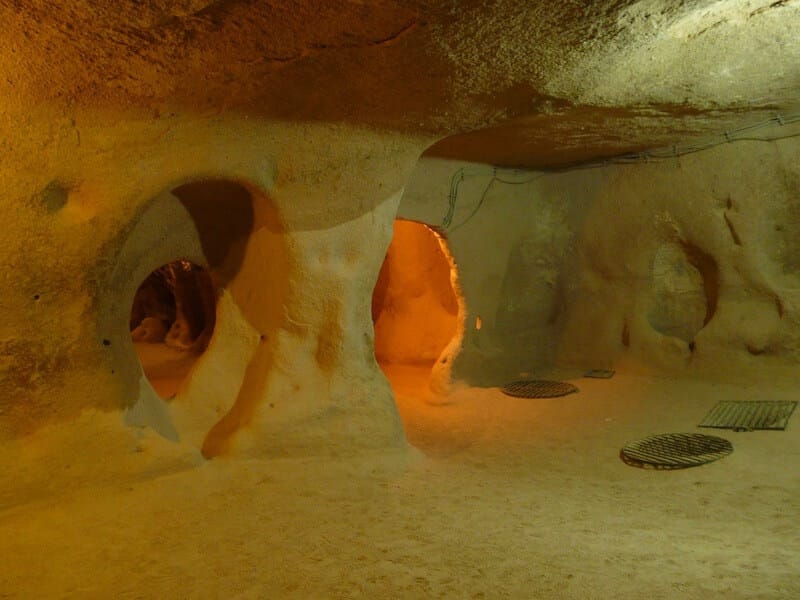The Ultimate Statement of Religious Conviction
The Christian’s establishment of an underground religious sanctuary at Cappadocia is not only a testament to the early Christian’s resolve to perpetuate their beliefs, but it is also a testament to all humankind’s capacity for conviction.
First Christians
The trials and tribulations of the first Christians are, of course, well documented both historically and Biblically. The spreading of the word’ throughout the Roman Empire through the Near East, Asia, Mediterranean, and Rome itself–and the many sacrifices made by gentile Jews and pagans alike, is chronicled by several renowned historians of the time as well as authors of the New Testament. But while we can piece together much of the history surrounding Jesus’ crucifixion, there is renowned still don’t know about many of the people who chose the Christian path–defiant of Orthodox Jews who saw them as blasphemous and the Romans who saw them as enemies of the State.
From Damascus to Cappadocia
The New Testament tells us that in the aftermath of the crucifixion of Jesus, it soon became apparent to Rome’s reining ruler, Claudius Drusus Nero, that this “cult,” as Nero is said to have called them, who had deemed Jesus “The Messiah” was not losing faith as expected. In light of the Christians’ tenacity, Claudius decreed that they must all be eradicated for the good of the Empire by any means necessary. So, converting to this new religion meant conscious resignation to Rome’s persecution. Yet, as is evident today, many people nevertheless chose this perilous path to salvation. And no one was more instrumental in convincing them to do so than Paul, a former Jew born “Saul” who’d once dedicated his life to wiping the Christians off the face of the earth. Tradition holds that on a journey to Damascus where Saul intended to mount a violent offensive against the subversive followers of Jesus, he experienced an epiphany; a spiritual awakening that would ultimately change not only his worldview but the face and future of Christianity. Becoming a fervent advocate for the Jesus movement, the newly-baptized “Paul” launched a zealous walking ministry believed to have covered 20,000 miles–from Damascus to Tarsus, Ephesus to Rome. But what is most significant is the place he ended his journey. A place called Cappadocia, in central Turkey. This is the focus of this writing.
Paul’s ministry in Cappadocia
A visibly indescribable, seemingly man-made terrain of towering spires, cones, obelisks, and countless caves cut deep into solidified volcanic ash, geologists today believe this area was wholly created by massive volcanic eruptions that spewed a thick layer of ash 300 feet deep, covering 15,000 square miles. Historically, Cappadocia was known as home to a people whose chief economy was based on raising horses for the Roman army. But once visited by Paul, these people came to be recognized as one of the most pious religious groups in all of the Roman Empire, ultimately playing an extraordinary role in perpetuating the Word of Christ.

Underground settlements
Soon after the population’s conversion to Christianity, the breathtaking landscape of this unlikely crossroads of Asia and Europe became the mere facade of a unique fortress that developed most uniquely and phenomenally over the next three centuries. Although the sheer height of the terrain presented considerable protection from the Roman army (with whom they immediately fell at odds for their religious and trade betrayal), the Cappadocians further utilized their cavernous environment by burrowing deeper and deeper into the mountain of limestone, eventually carving out hundreds of miles of maze-like tunnels that are believed to have ultimately housed tens of thousands of Christians, in numerous self-contained underground settlements. Tens of thousands of individuals would constitute the largest population of “new religion” adherents for over a century.
The modern perspective
Using modern ground-penetrating radar, archaeologists have in recent years discovered the true genius of this religious community who for the last decades of their existence were believed to have abandoned their habitat. To sustain their cave-dwelling existence, the Cappadocians not only had to be the most clever artisans, but they also had to be extraordinary city planners and logisticians. Found hidden behind huge rolling doors in the back recesses of their terrestrial churches were multiple secret passages leading to the city proper (suburban passageways leading to urban centers where huge marketplaces and trade centers are thought to have existed). As this city was constructed to be self-sustaining and isolated, every conceivable need had to be considered in this world that would not enjoy daylight for indefinite periods. With some forty separate communities as deep as eight stories underground, archaeological evidence shows that these people lacked for nothing and did indeed thrive for centuries.
Humankind’s ultimate resolve
As an anthropologist specializing in religion and ritual behavior, I see religion as humankind’s most remarkable institution; perhaps the ultimate human enigma. Spirituality, devoutness, etherify, and piety reach far beyond our conscious minds into the deepest recesses of that which makes us what we are: intimately innate yet utterly unfathomable. And should anyone ever need to question humankind’s ultimate resolve or capacity for conviction, we need only consider the unlikely people of Cappadocia. I know of no more powerful statement of the human spirit.
